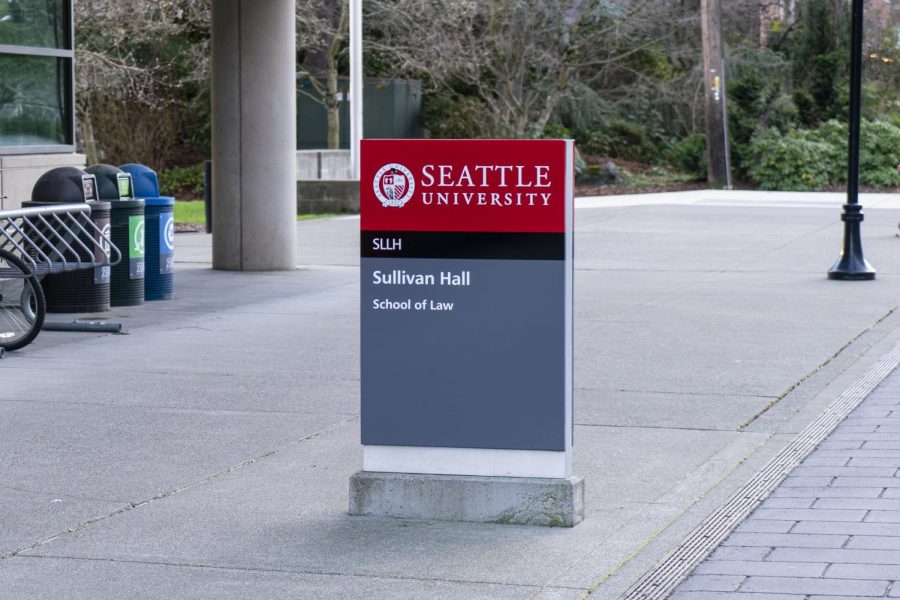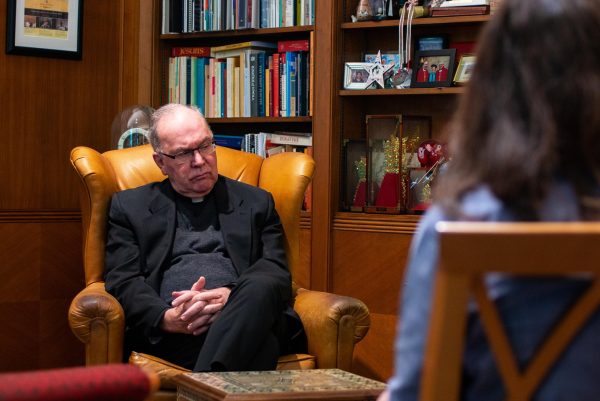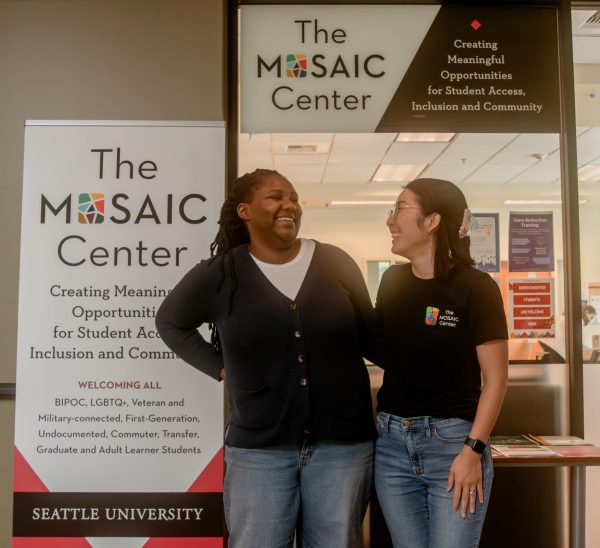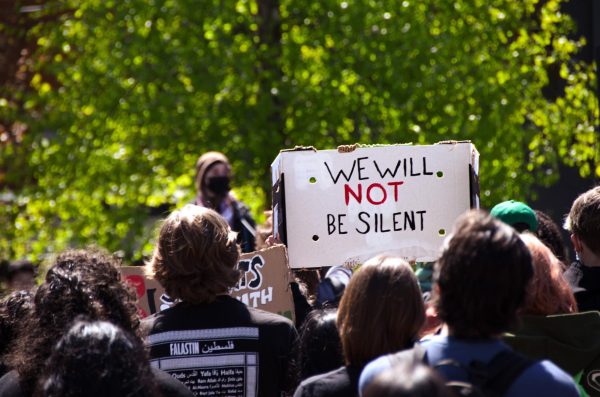First Year Law Students Allege Discrimination in the Classroom
The Seattle University School of Law purports to be committed to uplifting students of all backgrounds. The university’s 2022 admitted class is 56% female and 28% LGBTQ+. The Fred T. Korematsu Center for Law and Equity fights for marginalized groups on the ground and in the courtroom. Dean Anthony Varona emphasized diversity’s central role when describing his vision for the future of the law school.
“We are one of the most exciting law schools in the country right now,” Varona said. “A lot of that has to do with our social justice Jesuit Catholic mission, which attracts a lot of students who are deeply committed to changing the world for the better.”
However, an anonymous first-year law student believes that the school’s commitment to diversity is not nearly as strong as advertised.
“What’s being marketed and what’s actually delivered to students—there’s a complete misrepresentation in that,” the anonymous student said.
Student complaints center around Professor of Law Bernard Burk, who recently took a visiting professorship in part to teach a first-year Civil Procedures course. While the position lasts only a year, students told The Spectator that Burk’s conduct during the class made them uncomfortable.
“He designated Brown students as terrorists,” a second anonymous first-year law student said. “He called Native Americans savages on the first day of class.”
The second anonymous student also observed that Burk’s classroom recognition and awards failed to include students of color.
“He has this thing called Geek of the Week,” the student said. “No BIPOC was ever selected for Geek of the Week until we had a student go up and tell him that was unacceptable. Then, he elected two the next week.”
Beyond allegations of racially discriminatory treatment, the students shared stories of sexist and ableist incidents and a joke about gun violence that frightened some students. Students felt that Burk did not treat female-identifying students equally, did not give adequate disability accommodations and made comments patronizing students struggling with mental illness.
“Professor Burk has spouted hateful and discriminatory comments towards womxn, BIPOC and LGBTQ+ students, so much so, that we no longer feel safe in our classroom, and we have lost faith in the administration’s competency in handling these matters,” a group of first-year law students wrote in a statement. “This professor uses racial slurs, stymies classroom participation by yelling predominantly at womxn and discriminates against students with school-approved accommodations.”
The controversy surrounding Burk’s classroom has created significant division among the first-year law student body. According to the students, it has spawned rival groups among the class, with high tensions between those who do not see a problem with Burk’s teaching and those who feel uncomfortable being in the classroom.
Andrew Siegel, vice dean for academic affairs at the Seattle U School of Law, noted a wide range of opinions on the subject among first-year law students.
“Many students liked the class from the beginning,” Siegel said. “Many of the students who had concerns about the class have specifically said that initiatives we took have improved the experience.”
Burk is a visiting professor, meaning that he was hired shortly before the beginning of the academic year in part to teach classes that are unable to be covered by career or adjunct faculty. While most potential law school hires have student input factored into the decision, visiting professors are brought on without any avenue for student feedback due to the fast-paced nature of the hiring process.
The first anonymous student believes that if student opinions were sought in the visiting professor hiring process, discrimination in academic situations could be avoided.
“Apparently there have been issues over the last three years with visiting professors,” the student said. “Certain professors have had issues acclimating to the school or the campus climate. It seems to be a systemic issue that has not been addressed.”
When students attempted to report the biased treatment through official channels, they experienced numerous delays and runarounds. After reports were made, students waited weeks for a response, if they got one at all. When a group of students met with administrators, they were told that there was no record of previous reports.
“All the student reports are constantly disappearing,” said the first anonymous law student who was involved in several different bias reports. “We have to re-traumatize ourselves by telling our stories a million times to a million different people. Even then it just disappears into thin air. Our main ask at this point is to create a better system so that this type of crap does not happen ever again.”
One system currently being rolled out is the Campus Climate Incident Reporting and Response Protocol. As opposed to previous years, where bias reporting systems at the undergraduate university and the School of Law were handled separately, Campus Climate Reports deal with all incidents of bias within any Seattle U institution. According to their website, the Incident Response Team reviews reports of Campus Climate Incidents and coordinates the University’s response.
“Our concerns were taken seriously when we started actually filing Campus Climate Reports,” a third anonymous student said. “I filed one. I got a response the next day. I felt very reassured by that and I’ve actually had meetings with the campus climate team and have felt in general more supported by them than from our own law school support team.”
Even when the reports reached their intended recipients, some students were confronted with threatening responses.
“We and the Student Bar Association were threatened by the administration,” the third anonymous student said. “They told us that if we make accusations against this professor we can be sued for defamation. Essentially, speaking up can open us up to punishment.”
Siegel dispelled the idea that administration was planning to sue students, but made it clear that a student being on the receiving end of a lawsuit for a complaint is not entirely unprecedented.
“Obviously there is no chance that we would be bringing legal action against anyone,” Siegel said. “A number of people spoke to students about the importance of sourcing their comments, appropriately phrasing their comments [and] making comments that were not gross generalizations because of the fact that across the country, there have been a small number of incidents where students have been sued for defamation in situations like this.”
While these incidents are not numerous, they are concerning for students hoping to speak freely about discrimination in the classroom. In 2008, a University of Arkansas law professor, Richard J. Peltz, brought a lawsuit against two students who alleged that he made racist remarks in class. Thomas Hubbard, a professor at the University of Texas, sued 11 people for defamation after they accused him of advocating for pedophilia.
“Nobody was trying to chill students’ speech in the least. We were trying to protect the students against the fact that if they behaved in a reckless way, they might face legal consequences,” Siegel said.
Aside from worries about bias, some students found Burk’s teaching style to be ineffective. One student felt time commitments required in the class were unreasonable and made success challenging. Required meetings, unannounced extensions of class time, readings and homework added up to a crushing workload.
“For a five credit class, you’re only supposed to be spending 10 hours outside of class to do this work,” the second anonymous student said. “[Burk’s mandatory preparation] takes upwards of 12 to 13 hours, which greatly exceeds American Bar Association requirements.”
Burk believed that his assigned preparatory material was necessary to prepare students for advanced work in their later semesters.
“Seattle U Law makes Civil Procedure the heaviest course in the first-term curriculum—five credit hours, which is between a half and a third of the entire first-term courseload,” Burk wrote to the Spectator. “The volume of material the Law School expects the course to cover is correspondingly substantial, and a great deal of reading and preparation is necessary for every class.”
The disconnect between the expectations of professors and faculty may extend into the wider field of education. Varona highlighted the challenges faced by some legal faculty in adjusting to changing needs of students.
“I don’t find some of these [student] concerns to be entirely unusual,” Varona said. “Particularly, over the last few years, I have been involved in helping some colleagues learn how to evolve their teaching and how to grow in their pedagogical approach to meet the needs of our students today.”
Some academics are publicly expressing unease about the rapid changes Varona references, with rising rates of student disengagement a primary worry. Many believe that this phenomenon is in part due to severe educational limitations during the COVID-19 pandemic.
“It is possible that everyone is coming into the classroom with good faith and with good intentions, but still there is a mismatch between expectations and needs of current students and the approach of a faculty member that might not be as effective today as it once was,” Varona said.
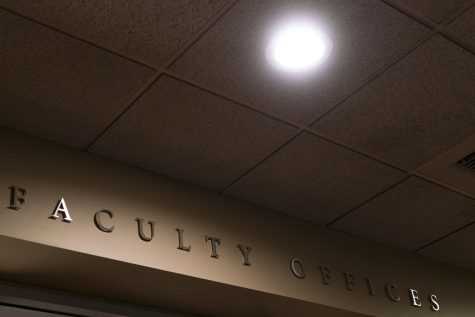
The faculty offices inside the Seattle University School of Law. (Jake Nelson)
Burk expressed confidence in his teaching style, citing its widespread use among legal faculty.
“The structure I use is not unique or original to me, and I’ve used it successfully for a dozen years. Variations are in use all over the country, including by some members of the faculty here,” Burk wrote.
Issues within the law school extend beyond one professor’s class. Students expressed concerns about administrative focus on marketing the school’s progressive message over upholding that value for current students.
“It’s all about branding and outside image, and it’s coming at the expense of caring for their students,” the first anonymous student said. “The administration has told us that we shouldn’t judge the law school based on one visiting professor, but the treatment given to students by this professor shows that [administrators] don’t care how we are feeling.”
The first anonymous source noted the contrast between Seattle U’s marketing to historically marginalized students and the treatment they received on campus.
“Having BIPOC students to parade around isn’t good enough when they are being targeted in a classroom with anti-Muslim statements, with transphobic statements, with sexist treatment towards students,” the first anonymous student said.
What comes next for aggrieved students, administration and Burk is yet to be seen. A strong, effective response could go a significant distance towards healing the rift between first-year students and the Seattle U School of Law.
Though for some, the damage may already be done.
“I don’t think anybody should ever go to this law school,” the second anonymous student said while holding back tears. “If I could take it back I would.”
As things stand, Burk is moving forward into the spring term with the backing of Seattle U leadership.
“The administration has expressed confidence in my ability to offer high-quality instruction to our students in the coming term,” Burk wrote. “I’m looking forward to getting to know the students in my spring semester courses.”
Editor’s Note: There are three separate anonymous sources in this article, all of whom are first-year law students at Seattle U’s School of Law.
Editor’s Note (1/27/23): Due to unfortunate comments of a threatening nature against both Professor Burk and the anonymous sources in question, The Spectator has turned off comments on this feature.






